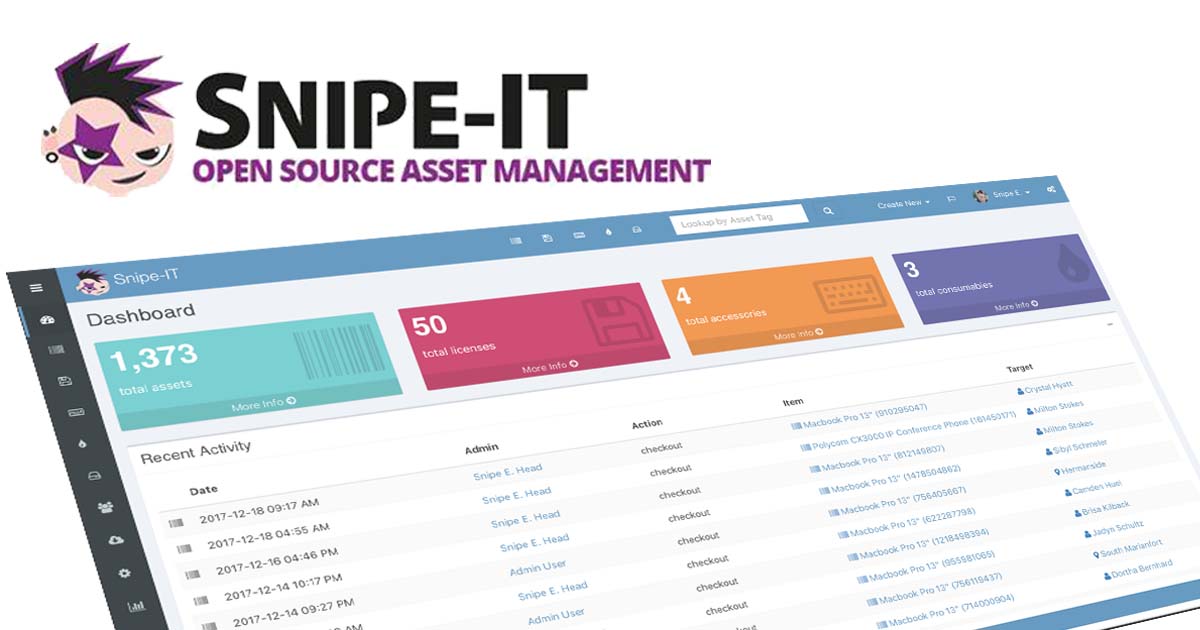ITAM with Snipe-IT
Snipe-IT is a free and open-source IT asset management (ITAM) application used to track and manage hardware assets, software licensing, and consumables within an organization. It supports many valuable features such as LDAP/AD connectivity, email notifications, api integrations and more.
Here’s a breakdown of its functionalities from both an end-user and administrator perspective, along with how it aligns with ITIL and DevOps best practices:
End-User:
- Self-service asset lookup: Users can easily search for specific assets using various criteria like model name, serial number, or asset tag. This promotes self-sufficiency and reduces reliance on IT staff for basic asset information.
- Quick access to asset details: Users can view detailed information about assigned assets, including specifications, purchase history, and location data. This transparency empowers users to manage their assets effectively.
- Improved communication: Integration with ticketing systems (potential add-on) allows users to submit service requests or report issues directly associated with specific assets. This streamlines communication and aids in faster resolution times.
Administrator:
- Centralized asset management: Snipe-IT provides a single source of truth for all hardware assets, including desktops, laptops, peripherals, and more. This improves visibility and control over the IT infrastructure.
- Streamlined asset tracking: Assigning unique identifiers (like QR codes) to each asset facilitates efficient tracking and auditing. This aligns with ITIL’s Configuration Management (CMDB) practices for maintaining accurate asset records.
- Automated workflows: Snipe-IT automates tasks like license renewals, warranty tracking, and asset check-in/check-out procedures. This reduces manual workload for IT staff and minimizes errors.
- Detailed reporting: Administrators can generate comprehensive reports on asset usage, deployment status, and upcoming maintenance needs. This data-driven approach supports informed decision-making regarding IT assets.
Alignment with ITIL and DevOps:
- ITIL:
- Configuration Management (CMDB): Snipe-IT acts as a centralized repository for asset data, contributing to a more comprehensive CMDB.
- Change Management: Tracking asset lifecycles and deployments aligns with ITIL’s Change Management processes.
- Service Asset and Configuration Management (SACM): Snipe-IT facilitates the management of IT assets as service components, aligning with SACM principles.
- DevOps:
- Infrastructure as Code (IaC): While not core functionality, Snipe-IT can be integrated with IaC tools to automate asset provisioning and configuration.
- Continuous Monitoring: Asset tracking and health monitoring capabilities can be leveraged to support continuous monitoring practices within DevOps.
Overall, Snipe-IT is a valuable tool for both end-users and IT administrators. It promotes self-service, streamlines asset management, and aligns with several ITIL and DevOps best practices.
Additional Considerations:
- Scalability: While free and open-source, Snipe-IT might require additional configuration or resource allocation for very large asset inventories.
- Customization: The open-source nature allows for customization through plugins and extensions to suit specific organizational needs.
- Security: Following best practices for user access control and data security is crucial when deploying Snipe-IT.
By carefully considering these factors, Snipe-IT can be a powerful asset management solution that empowers both IT staff and end-users within your organization.
